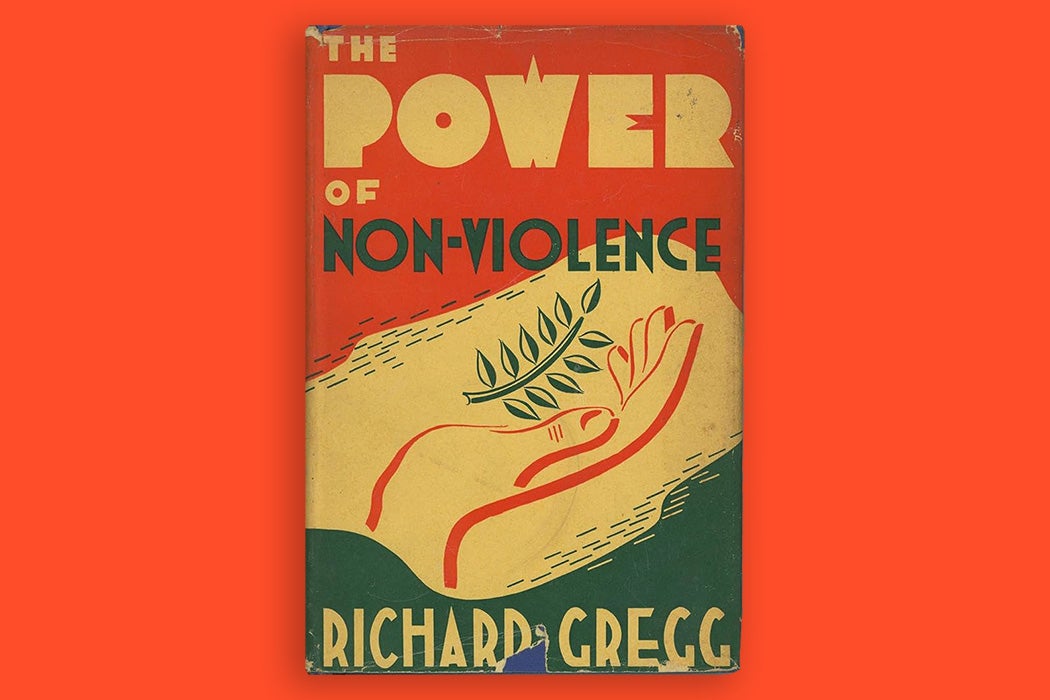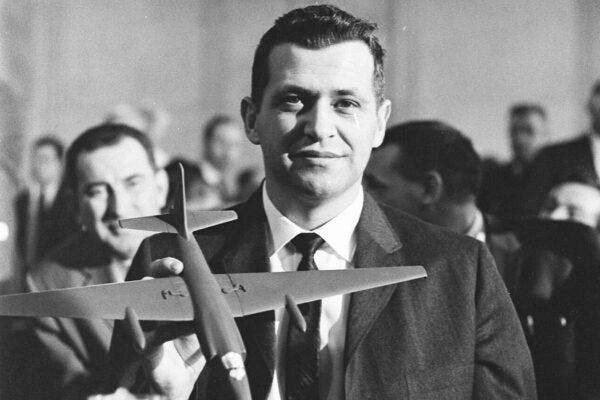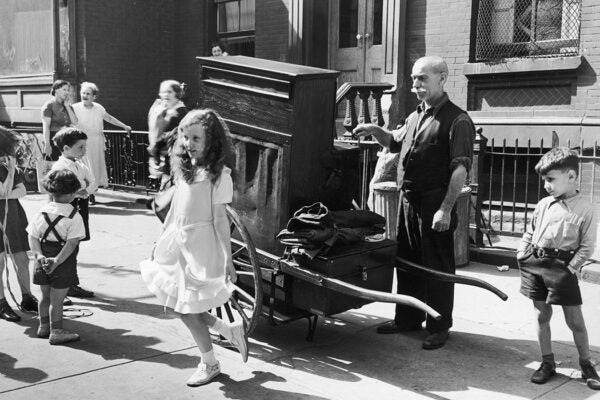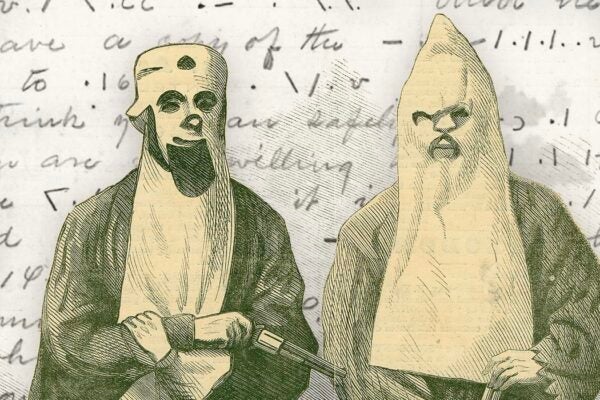By 1957, Martin Luther King Jr. was the nation’s best-known practitioner of nonviolent direct action. That year, he was asked to name the five texts that most influenced him. He named two books about Mohandas K. Gandhi, including Gandhi’s own autobiography, The Story of My Experiments with Truth. King also choose Henry David Thoreau’s essay “On the Duty of Civil Disobedience” and Walter Rauschenbusch’s classic on the Social Gospel, Christianity and the Social Crisis. Today, none of these choices would be deemed surprising, notes scholar Joseph Kip Kosek. It was the fifth book on King’s list that jumps out, because it’s “virtually unknown today.”
This was Richard Gregg’s The Power of Non-Violence, first published in 1934. A pioneer of translating Gandhi’s work in India for an American audience, Gregg (1885–1974) became “the first American to develop a substantial theory of nonviolent resistance.”
As Kosek explains,
[m]ilitant nonviolence did not emerge in the United States as a response to racial segregation in the 1950s. Its central characteristics appeared during the interwar period, amid a worldwide crisis of democracy fomented by industrial conflict, economic instability, and increasingly precarious colonial system, and the ascendant threats of fascism and Communism.
Gregg argued that “the future of democratic societies depended on their members’ absolute renunciation of violence as a means of social change or conflict resolution.” Part of the “small radical pacifist vanguard” of the Fellowship of Reconciliation (founded 1914) and the War Resisters League (a secular offshoot of the FOR in 1923), he bridged the Old and New Lefts, connecting the labor struggles of the first half of the century with the civil rights and anti-war efforts of the second half.
“More than any other single figure,” Kosek writes, “Gregg taught American pacifists and social reformers that nonviolence was more than an ethical or religious principle; it was also a self-conscious method of social action with its own logic and strategy.”
In fact, for Gregg, nonviolence was a “weapon.” (He liberally quoted von Clausewitz, Napoleon, and other military strategists in his work.) As a “public moral dialogue,” Gregg saw nonviolence as intimately wrapped up in modern psychology, modern politics, and modern systems of representation and communication. He understood that nonviolence, especially as manifested in the suffering of its practitioners at the hands (hoses, dogs, guns, tanks…) of the wielders of violence, was a “dramatic performance that would elicit guilt and shame from opponents and sympathy from onlookers.” The power of nonviolence was the power of sympathy it aroused in “beholders”—the audience, which was just as important as those who suffered violence; mass media made all the world a stage for the strategy.
“Like many innovators,” Gregg is hard to categorize, writes Kosek. The son of a Congregational minister, Gregg in his own words did “not belong to any church” but was intensely religious all his life. The labor struggle was his crucible, especially the defeat of a 1922 railroad strike by government and corporate reaction.
“The railway shopmen’s strike of 1922 probably did more to shape [his] ideas about violence than did the military slaughter of the Great War,” Kosek notes. Federal law—written by the representatives of capital—gave the railway companies “almost total victory”; the desperate counteracting violence of union members themselves could not help. Despairing of the violence inherent in the industrial system, Gregg went to India in 1925 and stayed for four years.
Nonviolence is probably as old as humanity. Sabotage, subterfuge, and other acts of everyday resistance have long been the “weapons of the weak,” in anthropologist James C. Scott’s phrase. Such acts—by peasants, slaves, workers, etc.—are not, however, systemic attempts at social change. Followers of militant abolitionist William Lloyd Garrison understood as early as the 1830s and 1840s that systemic, transformative nonviolence was essentially a battle over public opinion, but it took Gandhi to make nonviolence a national liberation struggle.
Weekly Newsletter
Before Gregg, those Americans paying attention to Gandhi couldn’t figure out how he mattered to modern politics. Though impressed with Gandhi the person, Gregg eschewed hero-worship and worked, in his own words, to “state in Western concepts and terminology the principles and practice of non-violent resistance.”
The third edition of Gregg’s Power of Non-Violence (1959) came with a foreword by Martin Luther King Jr., the person who came closest to achieving Gregg’s “fusion of principle and spectacle” in the use of nonviolence to “rescue and revitalize democratic practice.”







